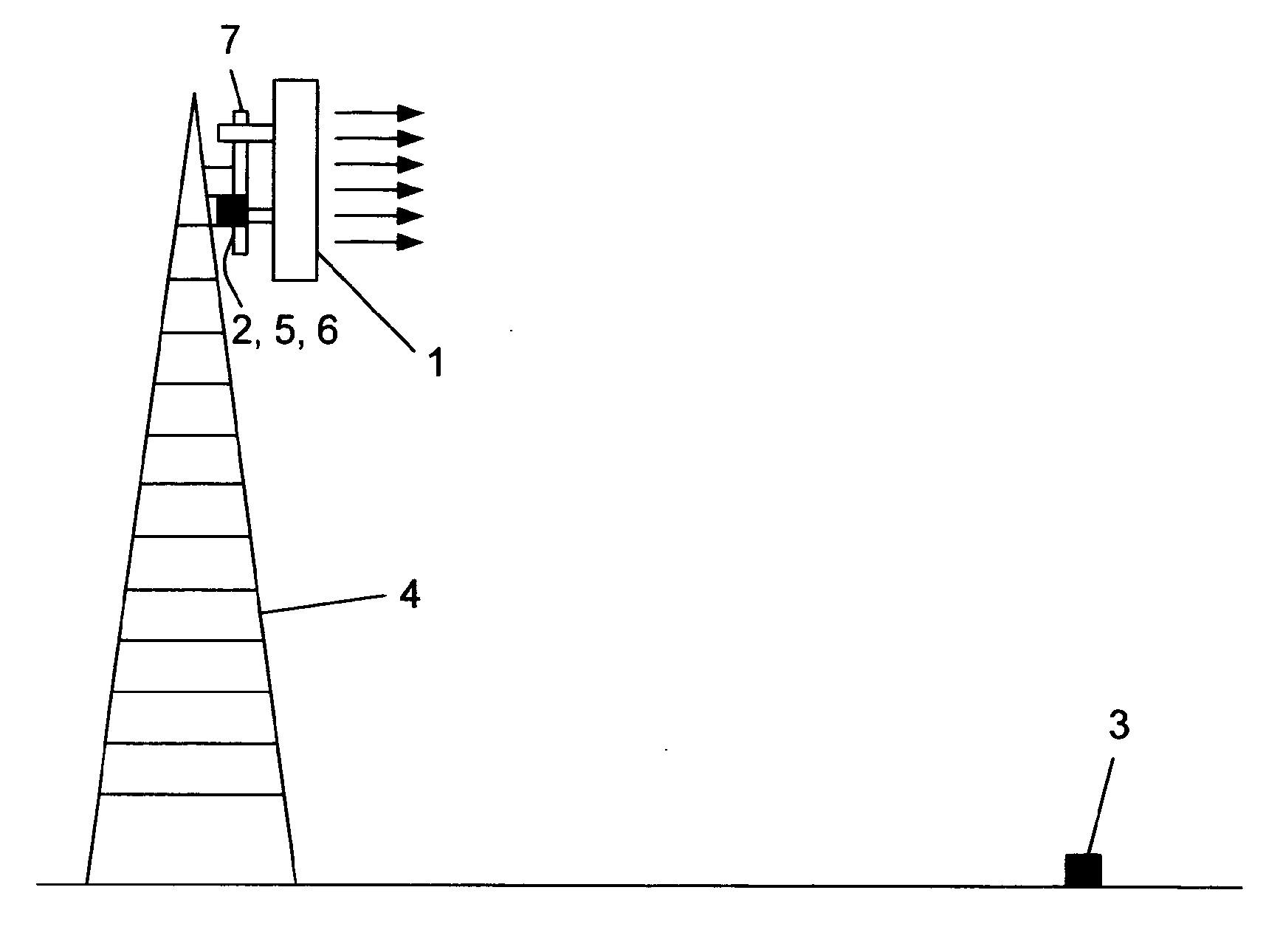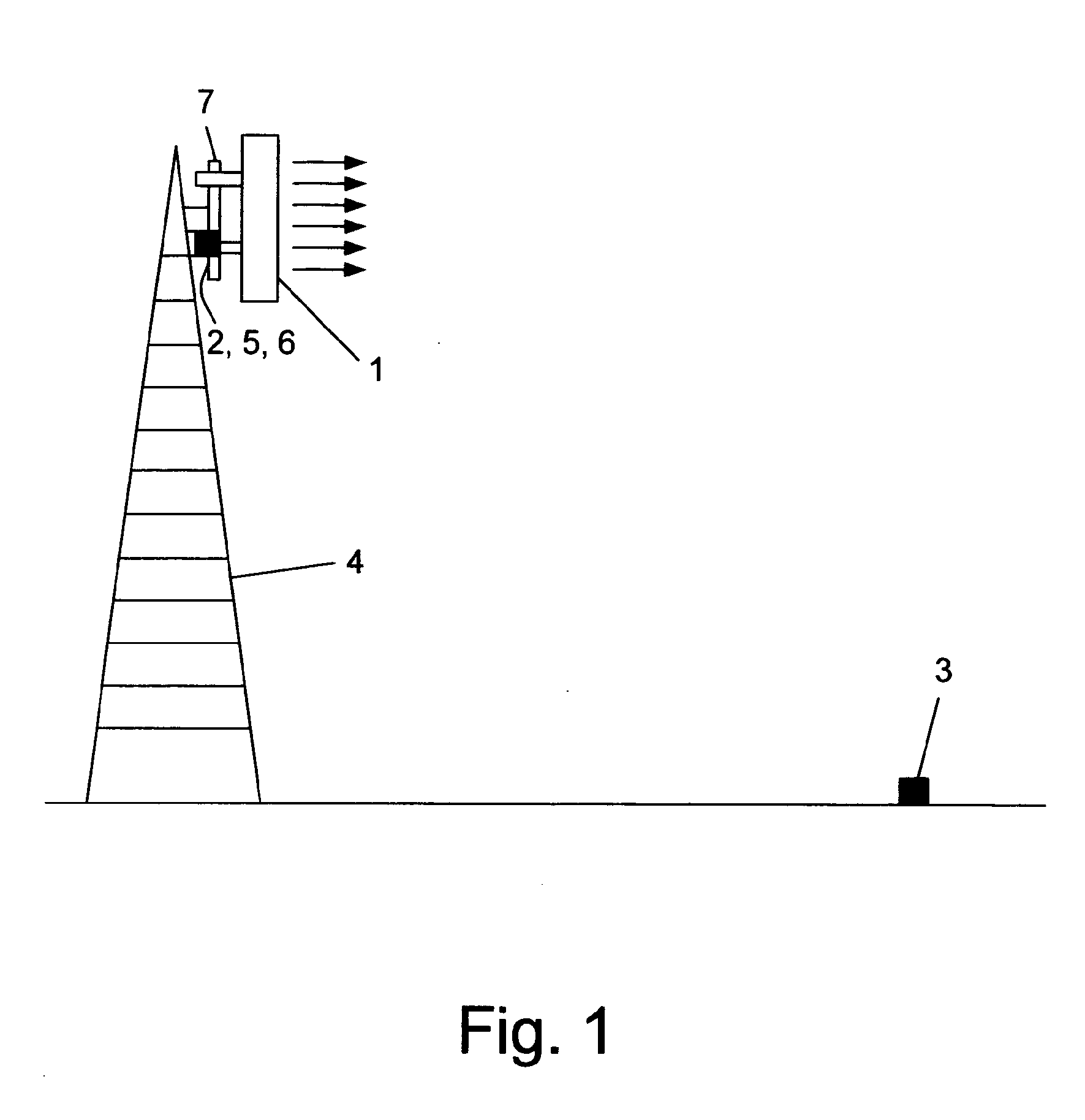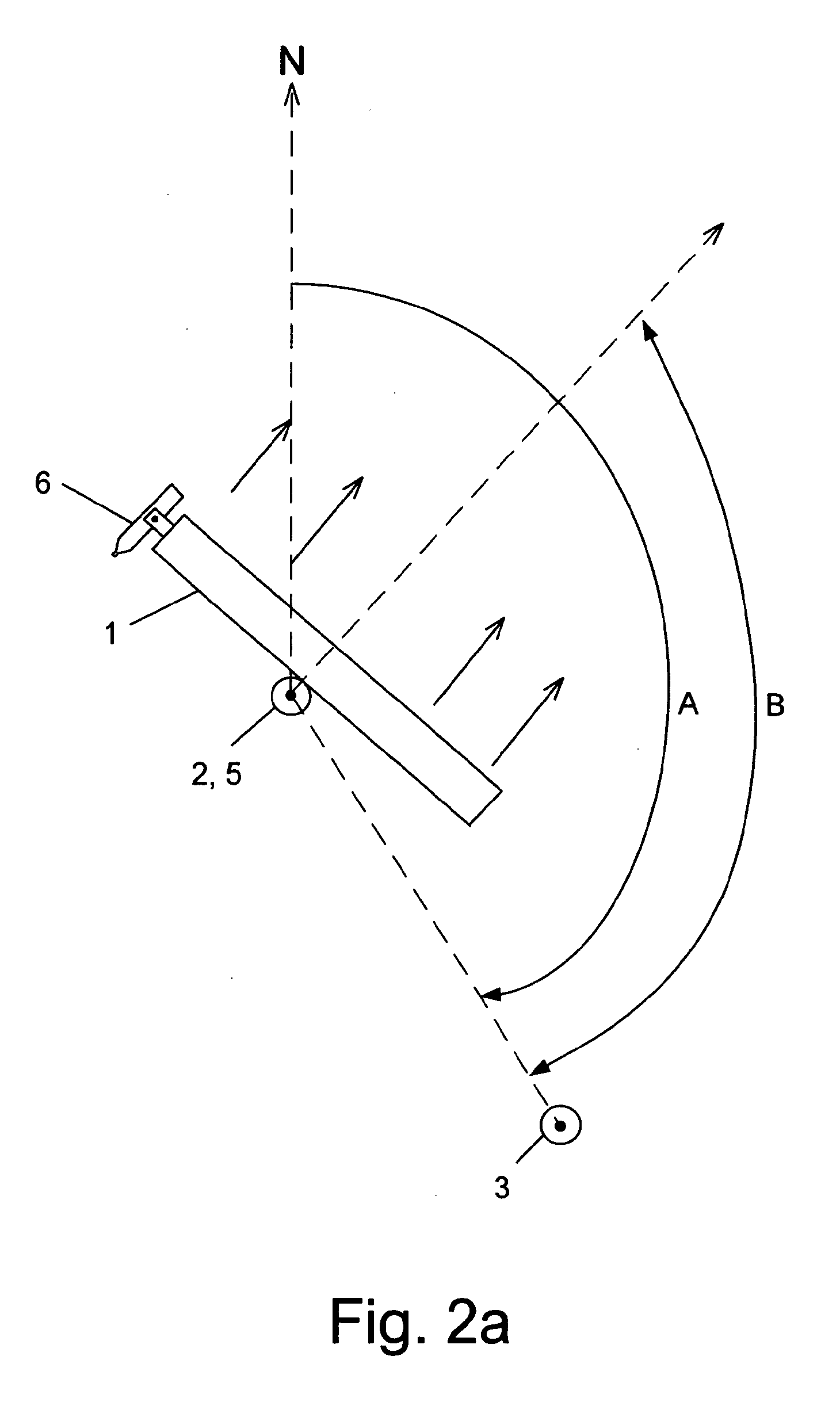System and method for accurately directing antennas
a technology of accurate directing and antennas, applied in the field of directional antennas, can solve the problems of weak signal transmission and reception, affecting the quality of information that is being transferred, and the accuracy of antenna alignment, so as to achieve accurate and time-efficient redirection
- Summary
- Abstract
- Description
- Claims
- Application Information
AI Technical Summary
Benefits of technology
Problems solved by technology
Method used
Image
Examples
Embodiment Construction
[0061]FIG. 1 schematically illustrates an embodiment of the present invention. A directional antenna 1 is pivotally attached to a vertical axle 7 which is mounted on an antenna tower 4. Antenna 1 has its primary transmission direction marked by the corresponding arrows. FIG. 1 illustrates an initial state when the system is used to carry out the initial calibration. A first GPS receiver 2 is positioned adjacent to antenna 1 as well as optical means 6, and a second GPS receiver 3 is positioned at a distance from antenna tower 4. Rotation sensor 5 is attached to antenna 1.
[0062]Optionally, rotation sensor 5 is intended to remain attached to antenna 1 for the duration of the operational life of antenna 1, barring possible faults. For such a case, there is a possibility that antenna 1 is originally manufactured to include some of the system's components, at least including rotation sensor 5.
[0063]To perform initial direction of the antenna 1 to a predetermined azimuth, the azimuth must ...
PUM
 Login to View More
Login to View More Abstract
Description
Claims
Application Information
 Login to View More
Login to View More - R&D
- Intellectual Property
- Life Sciences
- Materials
- Tech Scout
- Unparalleled Data Quality
- Higher Quality Content
- 60% Fewer Hallucinations
Browse by: Latest US Patents, China's latest patents, Technical Efficacy Thesaurus, Application Domain, Technology Topic, Popular Technical Reports.
© 2025 PatSnap. All rights reserved.Legal|Privacy policy|Modern Slavery Act Transparency Statement|Sitemap|About US| Contact US: help@patsnap.com



